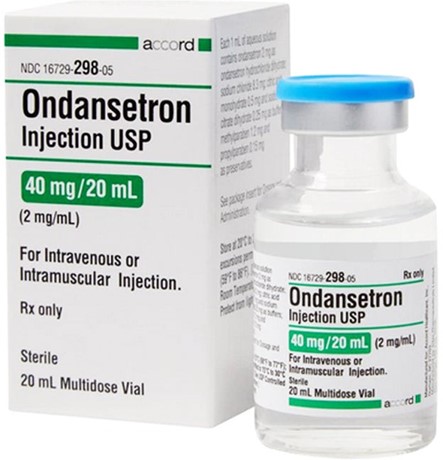Under which circumstance should a pediatric medication dose calculated from an adult dose be avoided?
If the drug insert does not specify a pediatric dose
If the child has an elevated temperature that has not responded to treatment
If the child has gained or lost weight in the past month
If the drug insert states that the medication is not for pediatric use
The Correct Answer is D
To answer this question, we need to understand the principles of pediatric dosage calculations and the factors that affect them. Pediatric dosages are usually calculated based on the child's weight or body surface area, and sometimes adjusted for age, organ function, or disease severity¹. However, not all medications that are used in adults are safe or effective in children. Some medications may have different pharmacokinetics, pharmacodynamics, adverse effects, or interactions in children than in adults².
Therefore, it is important to check the drug insert or label for any contraindications, warnings, or precautions for pediatric use before prescribing or administering a medication to a child. If the drug insert states that the medication is not for pediatric use, it means that the medication has not been tested or approved for use in children, or that it has been shown to be harmful or ineffective in children. In this case, a pediatric dose calculated from an adult dose should be avoided, as it may result in serious toxicity or therapeutic failure. The healthcare provider should consult a pediatric specialist, a pharmacist, or a reliable drug reference for alternative medications or dosing recommendations.
The other options are not correct because they do not necessarily warrant avoiding a pediatric dose calculated from an adult dose.
Option a. If the drug insert does not specify a pediatric dose, it means that there is insufficient data or evidence to support a specific pediatric dose, but it does not mean that the medication is contraindicated or unsafe in children. The healthcare provider should use clinical judgment and available resources to determine the appropriate dose for the child³.
Option b. If the child has an elevated temperature that has not responded to treatment, it means that the child may have an infection or inflammation that may affect the absorption, distribution, metabolism, or excretion of some medications. The healthcare provider should monitor the child's condition and adjust the dose accordingly, but it does not mean that the medication should be avoided altogether⁴.
Option c. If the child has gained or lost weight in the past month, it means that the child's weight may have changed significantly since the last dose calculation. The healthcare provider should weigh the child and recalculate the dose based on the current weight, but it does not mean that the medication should be avoided altogether.
Nursing Test Bank
Naxlex Comprehensive Predictor Exams
Related Questions
Correct Answer is B
Explanation
To find the dose of ondansetron, you need to use the formula for weight-based dosage calculation:
Dose (mg) = Weight (kg) x Prescribed dose (mg/kg)
Since the client's weight is 70 kg and the prescribed dose is 0.34 mg/kg, plug in these values into the formula:
Dose (mg) = 70 kg x 0.34 mg/kg
Simplify and solve for the dose:
Dose (mg) = 23.8 mg
Therefore, the client should receive **23.8 mg** of ondansetron prior to chemotherapy.

Correct Answer is D
Explanation
To find the answer, we need to convert the units of the medication order and the infusion rate to the same units. We can use the following conversions:
1 mcg = 0.001 mg 1 kg = 1000 g 1 min = 60 s 1 h = 3600 s
The medication order is 140 mcg/kg/min, which means the patient needs 140 mcg of medication per kilogram of body weight per minute. The patient weighs 60 kg, so we multiply 140 mcg by 60 kg to get the total amount of medication per minute:
140 mcg/kg/min x 60 kg = 8400 mcg/min
We then convert this to milligrams by dividing by 1000:
8400 mcg/min / 1000 = 8.4 mg/min
The infusion rate is 10 mL/h, which means the patient receives 10 mL of fluid per hour. We convert this to minutes by dividing by 60:
10 mL/h / 60 = 0.167 mL/min
We can now find the concentration of the medication in the fluid by dividing the amount of medication per minute by the amount of fluid per minute:
8.4 mg/min / 0.167 mL/min = 50.3 mg/mL
This means that for every milliliter of fluid, there are 50.3 milligrams of medication. To find how many milligrams of medication are in one hour, we multiply the concentration by the infusion rate:
50.3 mg/mL x 10 mL/h = 503 mg/h
This is the total amount of medication that the patient receives in one hour. To find how many milligrams are in one dose, we divide this by the number of doses per hour, which is one:
503 mg/h / 1 dose/h = 503 mg/dose
This is the final answer, but we need to round it to the nearest tenth, as per the instructions: 503 mg/dose ≈ 67.2 mg/dose
Whether you are a student looking to ace your exams or a practicing nurse seeking to enhance your expertise , our nursing education contents will empower you with the confidence and competence to make a difference in the lives of patients and become a respected leader in the healthcare field.
Visit Naxlex, invest in your future and unlock endless possibilities with our unparalleled nursing education contents today
Report Wrong Answer on the Current Question
Do you disagree with the answer? If yes, what is your expected answer? Explain.
Kindly be descriptive with the issue you are facing.
